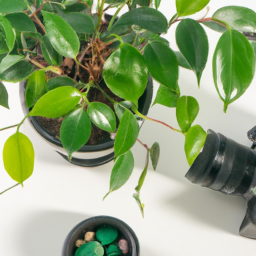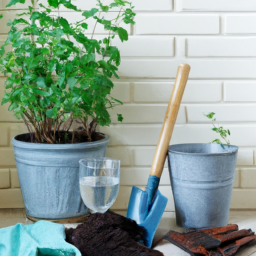
Benefits of Indoor Gardening: How gardening indoors can improve air quality and overall well-being
Indoor gardening has gained significant popularity in recent years, and for good reason. Not only does it add a touch of nature to your living space, but it also offers a wide range of benefits for your health and well-being. In this article, we will explore how gardening indoors can improve air quality and enhance your overall well-being.
Improved Air Quality
One of the most notable benefits of indoor gardening is its ability to improve air quality. Plants naturally absorb carbon dioxide and release oxygen through a process called photosynthesis. By bringing plants indoors, you can create a healthier environment by increasing the oxygen levels and reducing the concentration of harmful pollutants.
Indoor air pollution is a common problem in many households, mainly due to factors such as poor ventilation, synthetic materials, and the use of chemical cleaning products. These pollutants can have adverse effects on our respiratory system and overall health. However, by introducing indoor plants, you can effectively filter out these pollutants and improve the air quality within your home.
Plants also release moisture vapor into the air through a process known as transpiration. This helps to increase humidity levels, which can be beneficial, especially during dry winter months when indoor air tends to be drier. Proper humidity levels can alleviate respiratory problems, reduce the risk of infections, and even improve skin conditions.
Stress Reduction and Mental Well-being
Gardening indoors not only benefits your physical health but also has a positive impact on your mental well-being. Numerous studies have shown that spending time in nature and being surrounded by plants can reduce stress, anxiety, and even symptoms of depression.
Indoor gardening provides a therapeutic escape from the fast-paced modern lifestyle. It allows you to connect with nature and engage in a calming and rewarding activity. The act of nurturing plants and watching them grow can be incredibly satisfying and fulfilling.
Furthermore, plants have been found to improve concentration and productivity. Having greenery around you while working or studying can enhance focus and creativity. The presence of plants in indoor spaces has also been linked to improved mood and increased feelings of happiness and contentment.
Creating a Relaxing and Aesthetically Pleasing Environment
Indoor gardens not only offer health benefits but also help create a visually appealing and relaxing environment within your home. The presence of plants adds a touch of natural beauty and can transform any space into a tranquil oasis.
You can choose from a wide variety of indoor plants, each with its unique shape, color, and texture. Whether you prefer lush green foliage or vibrant flowering plants, there is something to suit every taste and style. Additionally, plants can be placed strategically to enhance the aesthetics of your living space and create a visually pleasing focal point.
Incorporating indoor gardens into your home decor can also help to improve the acoustics of a room. Plants have the ability to absorb sound, reducing background noise and creating a more peaceful and serene atmosphere.
In conclusion, indoor gardening offers numerous benefits for both your physical and mental well-being. By improving air quality, reducing stress, and creating a visually appealing environment, gardening indoors can significantly enhance your overall quality of life. So why not start your own indoor garden today and experience the joys and benefits it has to offer!
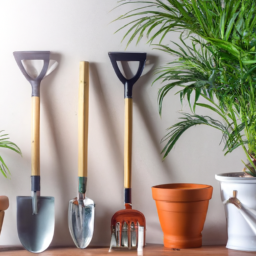
Best Plants for Indoor Gardening: A guide to selecting and caring for plants that thrive indoors
Indoor gardening is a wonderful way to bring nature into your home and create a calming and beautiful environment. However, not all plants are suitable for indoor growth. In this guide, we will explore the best plants for indoor gardening, considering their adaptability, maintenance requirements, and aesthetic appeal. Whether you are a beginner or an experienced gardener, this article will provide you with valuable insights and tips to successfully grow and care for indoor plants.
1. Succulents
Succulents are an excellent choice for indoor gardening due to their low maintenance requirements and unique appearance. These plants have thick, fleshy leaves that store water, allowing them to survive in dry conditions. They come in various shapes, sizes, and colors, making them a versatile option for any indoor space.
When selecting succulents, consider their light requirements. Most succulents thrive in bright, indirect light but can tolerate lower light conditions. Some popular succulent varieties include Aloe Vera, Echeveria, and Jade Plant. To care for succulents, provide well-draining soil, water sparingly, and ensure they receive adequate sunlight.
Additionally, succulents are known for their ability to purify the air by removing toxins. They release oxygen at night, making them ideal plants for bedrooms. With proper care, succulents can thrive indoors for many years, adding a touch of natural beauty to your living space.
2. Herbs
Indoor herb gardens are not only practical but also visually appealing. Growing herbs indoors allows you to have fresh, aromatic ingredients at your fingertips all year round. Some popular herbs for indoor gardening include basil, mint, parsley, and rosemary.
When selecting herbs, consider their growth habits and space requirements. Some herbs, like basil and mint, grow quickly and benefit from regular pruning. Ensure they have enough room to spread their roots and grow. Place them in a sunny spot near a window, preferably south-facing, to provide them with at least 6 hours of sunlight each day.
To care for indoor herbs, use well-draining soil and water them when the top inch of soil feels dry. Fertilize them regularly with a balanced liquid fertilizer to promote healthy growth. With proper care, your indoor herb garden will not only enhance your culinary adventures but also add a delightful fragrance to your home.
3. Ferns
Ferns are a popular choice for indoor gardening due to their lush foliage and ability to thrive in lower light conditions. These plants add a touch of elegance and tranquility to any indoor space. There are several fern varieties to choose from, including Boston Fern, Maidenhair Fern, and Bird’s Nest Fern.
When selecting ferns, consider their light and humidity requirements. Most ferns prefer indirect light and high humidity levels. Place them in a location away from direct sunlight, such as a north-facing window. Mist their leaves regularly or use a humidifier to maintain the required humidity level.
Caring for ferns involves providing them with well-draining soil and watering them consistently. Keep the soil evenly moist, but avoid overwatering, as it can lead to root rot. With their graceful fronds and ability to purify the air, ferns are an excellent choice for indoor gardening enthusiasts.
Indoor gardening offers a myriad of benefits, from improving air quality to reducing stress levels. By selecting the right plants and providing them with proper care, you can create a thriving indoor garden that enhances your living space. Whether you choose succulents, herbs, ferns, or a combination of different plants, the key is to understand their specific needs and provide them with the ideal growing conditions. So go ahead, unleash your creativity, and embark on a rewarding journey of indoor gardening!
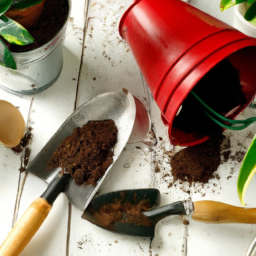
Indoor Gardening Techniques: Tips and tricks for successful indoor gardening, including lighting and watering strategies
Indoor gardening offers a wonderful opportunity to bring nature indoors and create a thriving green oasis within your home. Whether you have limited outdoor space, live in an apartment, or simply want to enjoy gardening year-round, indoor gardening can be a fulfilling and rewarding hobby. In this article, we will explore various techniques, tips, and tricks for successful indoor gardening, including strategies for lighting and watering.
Choosing the Right Indoor Plants
When it comes to indoor gardening, selecting the right plants is crucial for success. Not all plants thrive in indoor environments, so it’s essential to choose plants that are well-suited for growing indoors. Consider factors such as light requirements, temperature tolerance, and space availability before making your plant selections.
Some popular indoor plants that are known for their adaptability and resilience include spider plants, pothos, peace lilies, and snake plants. These plants are relatively low-maintenance and can tolerate a range of light conditions, making them ideal for beginners.
Additionally, herbs like basil, parsley, and mint can also be grown indoors and provide fresh flavors for your culinary adventures. Remember to research each plant’s specific care requirements to ensure you provide them with the optimal growing conditions.
Providing Adequate Lighting
Light is one of the most critical factors in successful indoor gardening. While natural sunlight is ideal, it may not always be available or sufficient, especially if you have limited access to windows or live in a region with long, dark winters. In such cases, artificial lighting becomes essential.
When choosing artificial lights for your indoor garden, opt for full-spectrum LED grow lights. These lights mimic the natural spectrum of sunlight and provide the necessary wavelengths for photosynthesis. Place the lights at an appropriate distance above the plants, considering their light requirements and growth stage.
It’s important to note that different plants have varying light requirements. Some plants, such as succulents and cacti, prefer bright, direct light, while others, like ferns and African violets, thrive in indirect or filtered light. Adjust the lighting intensity and duration based on the specific needs of your plants.
Watering Strategies for Indoor Plants
Watering indoor plants can be a bit tricky, as overwatering or underwatering can lead to plant stress and health issues. Understanding your plants’ water requirements and implementing appropriate watering strategies is crucial for their well-being.
First, it’s important to choose the right type of soil for your indoor plants. Well-draining soil that retains moisture without becoming waterlogged is ideal. You can find specialized potting mixes for different types of plants, or create your own by combining peat moss, perlite, and vermiculite.
When watering your plants, it’s best to water thoroughly but infrequently. Allow the soil to dry out slightly between waterings to prevent root rot and fungal diseases. Remember that different plants have different water needs, so it’s essential to research and understand the specific requirements of each plant you have.
One useful technique for watering indoor plants is the “bottom-up” method. Place your potted plants in a tray or saucer filled with water, allowing the roots to absorb moisture through the drainage holes. This method ensures that the plant gets watered from the bottom up, preventing waterlogging and promoting healthy root development.
Another helpful tip is to use a moisture meter to gauge the soil’s moisture level. This tool can give you a more accurate indication of when to water your plants, preventing both overwatering and underwatering.
By following these indoor gardening techniques, including proper plant selection, providing adequate lighting, and implementing effective watering strategies, you can create a thriving indoor garden that brings beauty and tranquility to your home. Remember to regularly monitor your plants’ health, adjust care routines as needed, and enjoy the journey of nurturing your own little green sanctuary.
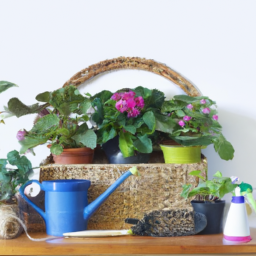
Creating a Stylish Indoor Garden
Indoor gardening is not only a fantastic way to bring nature indoors, but it also allows you to enhance the aesthetic appeal of your living space. With a little creativity and planning, you can design and arrange an indoor garden that is not only visually pleasing but also a soothing sanctuary. In this article, we will explore some ideas and tips to help you create a stylish indoor garden that will transform your home into a green oasis.
1. Choosing the Right Plants
The first step in creating a stylish indoor garden is to carefully choose the right plants. Consider the lighting conditions in your home and select plants that thrive in those conditions. Some popular indoor plants include pothos, snake plant, spider plant, and peace lily. These plants are not only beautiful but also known for their air-purifying qualities.
When selecting plants, also consider their size and growth habit. If you have limited space, opt for compact plants or those that can be trained to grow vertically, such as ivy or ferns. Additionally, choose plants with different textures and leaf shapes to add visual interest to your indoor garden.
Remember to also consider the care requirements of the plants you choose. Some plants require more attention and care than others. If you are a beginner, start with low-maintenance plants that are more forgiving and easier to care for.
2. Designing Your Indoor Garden
The design of your indoor garden plays a crucial role in creating a stylish and visually appealing space. Here are some design ideas to consider:
2.1. Selecting the Right Containers: Choose containers that complement your interior design style. Consider using a mix of different materials, such as ceramic, terracotta, or glass, to add visual interest. You can also repurpose unique items like teacups or mason jars as planters to create a quirky and eclectic look.
2.2. Grouping Plants: Create visually appealing arrangements by grouping plants with similar care requirements together. This not only makes it easier to care for them but also creates a cohesive look. Experiment with different heights, colors, and textures to create a visually dynamic display.
2.3. Adding Decorative Elements: Enhance the aesthetic appeal of your indoor garden by incorporating decorative elements such as pebbles, decorative rocks, or moss. These elements not only add visual interest but also help retain moisture and regulate humidity levels.
3. Arranging Your Indoor Garden
Once you have chosen the right plants and designed your indoor garden, it’s time to arrange them in a way that maximizes their visual impact. Here are some tips to help you arrange your indoor garden:
3.1. Consider the Focal Point: Identify a focal point in your living space, such as a large window or an empty wall, and arrange your plants around it. This draws attention to the indoor garden and creates a cohesive look.
3.2. Use Different Levels: Create visual interest by using different levels or tiers to display your plants. You can use plant stands, shelves, or hanging baskets to add height and depth to your indoor garden.
3.3. Rotate and Rearrange: To keep your indoor garden looking fresh and appealing, periodically rotate and rearrange your plants. This not only ensures all plants receive adequate light but also allows you to experiment with different arrangements and compositions.
With these ideas and tips, you are now equipped to create a stylish indoor garden that enhances the aesthetic appeal of your living space. Remember to regularly care for your plants by providing them with proper light, water, and nutrients. Happy gardening!
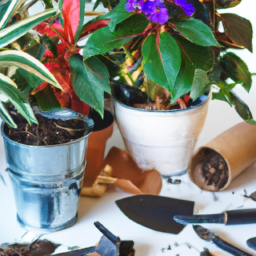
Troubleshooting Common Issues in Indoor Gardening
Indoor gardening is a wonderful way to bring nature into your home and enjoy the benefits of fresh produce or beautiful flowers all year round. However, like any gardening endeavor, it comes with its fair share of challenges. In this guide, we will explore some common issues faced in indoor gardening and provide effective solutions to overcome them.
Dealing with Pests
Pests can quickly become a nightmare for indoor gardeners, as they can infest your plants and cause significant damage. Here are some steps to tackle common pests:
1. Identify the pest: The first step is to identify the pest that is causing trouble in your indoor garden. Common pests include aphids, spider mites, whiteflies, and fungus gnats. Each pest requires a specific approach for effective control.
2. Natural remedies: Start with natural remedies before resorting to chemical pesticides. For example, introducing beneficial insects like ladybugs or lacewings can help control aphids and other small pests. Neem oil, a natural insecticide, is effective against a wide range of pests.
3. Chemical pesticides: If natural remedies fail, consider using chemical pesticides as a last resort. However, exercise caution and follow the instructions carefully to avoid harming your plants or yourself. Choose pesticides specifically labeled for indoor use.
Managing Diseases
Diseases can quickly spread among indoor plants, leading to wilting, yellowing leaves, or even plant death. Here’s how to manage common diseases:
1. Proper sanitation: Good hygiene is crucial in preventing the spread of diseases. Regularly clean your gardening tools, pots, and trays to minimize the risk of contamination. Remove any diseased plant material immediately to prevent further infection.
2. Provide adequate ventilation: Proper airflow is essential in reducing humidity levels and preventing the development of fungal diseases. Use fans or open windows to ensure good air circulation in your indoor garden.
3. Adjust watering practices: Overwatering can lead to root rot and other fungal diseases, while underwatering can stress the plants and make them more susceptible to infections. Find the right balance by checking the moisture level of the soil regularly and adjusting your watering schedule accordingly.
Overcoming Environmental Challenges
Indoor gardening can present various environmental challenges that need to be addressed for successful plant growth. Here are some solutions:
1. Insufficient light: Lack of natural sunlight is a common challenge for indoor gardeners. Ensure your plants receive adequate light by placing them near windows or using artificial grow lights. Choose plants that are suitable for low-light conditions if your space doesn’t receive much sunlight.
2. Temperature and humidity: Maintaining optimal temperature and humidity levels is crucial for indoor plants. Most houseplants thrive in temperatures between 60-75°F (15-24°C) and humidity levels of 40-60%. Use a thermometer and humidifier to monitor and regulate these conditions.
3. Nutrient deficiencies: Indoor plants rely on you for their nutritional needs. Use a balanced fertilizer to provide essential nutrients regularly. Pay attention to specific requirements of different plants, as some may have specific nutrient needs.
By following these troubleshooting steps, you can overcome common issues in indoor gardening and create a thriving indoor garden. Remember to observe your plants regularly, as early detection and prompt action are key to preventing major problems. Happy gardening!
Frequently Asked Questions (FAQ)
1. What is indoor gardening?
Answer:
Indoor gardening refers to the practice of growing plants indoors, usually in containers or pots, using artificial light sources instead of natural sunlight.
2. Why should I consider indoor gardening?
Answer:
Indoor gardening allows you to enjoy gardening even if you have limited outdoor space. It also enables you to grow plants that may not be suitable for your local climate or season.
3. What are the benefits of indoor gardening?
Answer:
Indoor gardening offers numerous benefits, including improved air quality, stress reduction, and the opportunity to grow fresh herbs, vegetables, or decorative plants year-round.
4. What are some popular plants for indoor gardening?
Answer:
Popular plants for indoor gardening include succulents, herbs like basil and mint, spider plants, pothos, peace lilies, and snake plants, among others.
5. How much light do indoor plants need?
Answer:
The light requirements vary depending on the plant species. However, most indoor plants thrive in bright, indirect light. Some plants may require more direct sunlight, while others can tolerate low-light conditions.
6. How often should I water my indoor plants?
Answer:
The watering frequency depends on factors such as the plant species, pot size, and environmental conditions. It’s generally recommended to water indoor plants when the top inch of soil feels dry, but it’s important to avoid overwatering as it can lead to root rot.
7. Can I use regular soil for indoor gardening?
Answer:
Regular garden soil is not ideal for indoor gardening as it may contain pests, weed seeds, or lack proper drainage. It’s best to use a well-draining potting mix specifically formulated for indoor plants.
8. Do indoor plants need fertilizer?
Answer:
Indoor plants generally benefit from occasional fertilization. However, the frequency and type of fertilizer depend on the plant species and the potting mix used. It’s recommended to follow the instructions provided with the specific fertilizer you choose.
9. How can I prevent pests in indoor gardening?
Answer:
To prevent pests, regularly inspect your indoor plants for signs of infestation, maintain good air circulation, avoid overwatering, and keep the area clean. If necessary, you can use organic pest control methods or seek professional advice.
10. Can I grow vegetables indoors?
Answer:
Absolutely! Many vegetables can be successfully grown indoors, including tomatoes, lettuce, peppers, and herbs. Just ensure they receive adequate light, proper nutrition, and enough space to grow.
Dr. Olivia Green is a botanist with over two decades of experience in indoor plant cultivation. She holds a Ph.D. in Plant Biology and has dedicated her career to researching plant behavior in controlled environments. Dr. Green is passionate about helping plant enthusiasts master the art of indoor gardening through her extensive knowledge and practical insights.


